|
Post-Storm Log: 5/26/05
|
Shortly after launching on the 18th, the weather forecast went downhill.
By late Friday, they were predicting some rainy, windy weather over the
weekend, so I went to the boat to prepare. I moved the CQR anchor
off the roller and down into the cabin, and made sure the boat was
otherwise safe and sound.The winds
didn't really materialize as they had predicted over the weekend, and I
felt I had over-prepared. Better safe than sorry. Even
Monday, though it was nasty, raining, and somewhat breezy from the
northeast, wasn't too bad, but the lousy forecast continued right into
the week.
Monday evening, however, massive wind
gusts rocked the house--it just sounded bad. There was nothing I
could do at the time, but first thing Tuesday morning I was down at the
waterfront. |
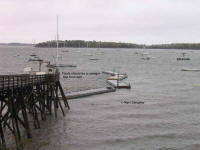 The
first thing I noticed, to my immense relief, was that Glissando was
still on the mooring. However, I immediately noticed that things
must have been very bad: the docks at PYC were all out of place,
and the gangway to the floats was broken away and submerged nearby.
Later, I found out that several boats had broken loose overnight and
gone ashore. The
first thing I noticed, to my immense relief, was that Glissando was
still on the mooring. However, I immediately noticed that things
must have been very bad: the docks at PYC were all out of place,
and the gangway to the floats was broken away and submerged nearby.
Later, I found out that several boats had broken loose overnight and
gone ashore. |
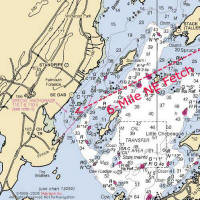 The
anchorage at Falmouth contains 1300 moorings, but is in a very exposed
location from both the northeast and the south-southwest--the two
directions that bring the worst storm winds. At times, very large
waves can build, thanks to a significant fetch. The
anchorage at Falmouth contains 1300 moorings, but is in a very exposed
location from both the northeast and the south-southwest--the two
directions that bring the worst storm winds. At times, very large
waves can build, thanks to a significant fetch.
Similar conditions back in
May 2002 caused damage to my original anchor platform and the bow of
the boat. I worry constantly about the boat during the season,
even though the weather generally remains fairly benign.
In any event, the winds and rain
continued most of the week, and it wasn't until Thursday afternoon that
I could finally get aboard for an inspection and damage assessment. |
When I got to the boat, I discovered that the port
pendant had indeed ended up flipped on top of the anchor platform, as I
had begun to surmise from staring at it from shore.
Here is what I first saw up at the bow; the port pendant had ended up
strung between the two rollers and over the end of the platform at about
the centerline:
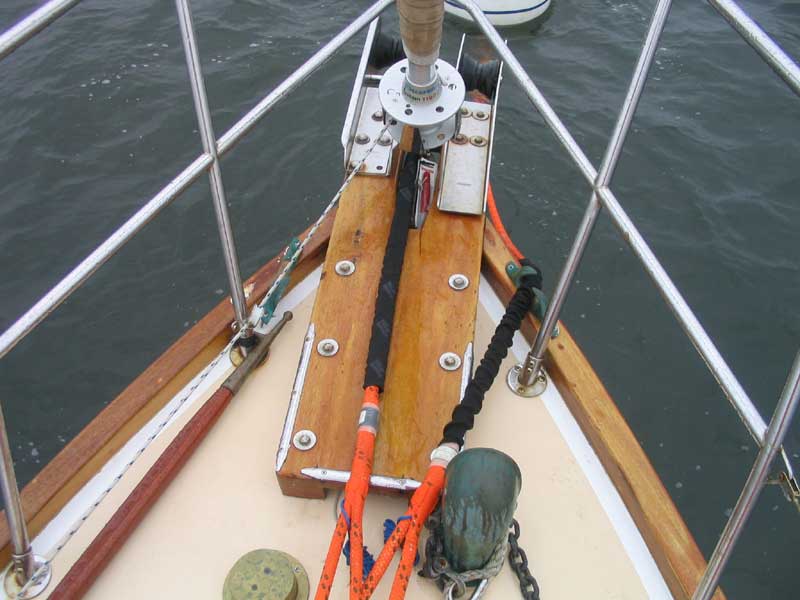
The pendant had of course chafed where it ran over the platform edge, as
seen here:
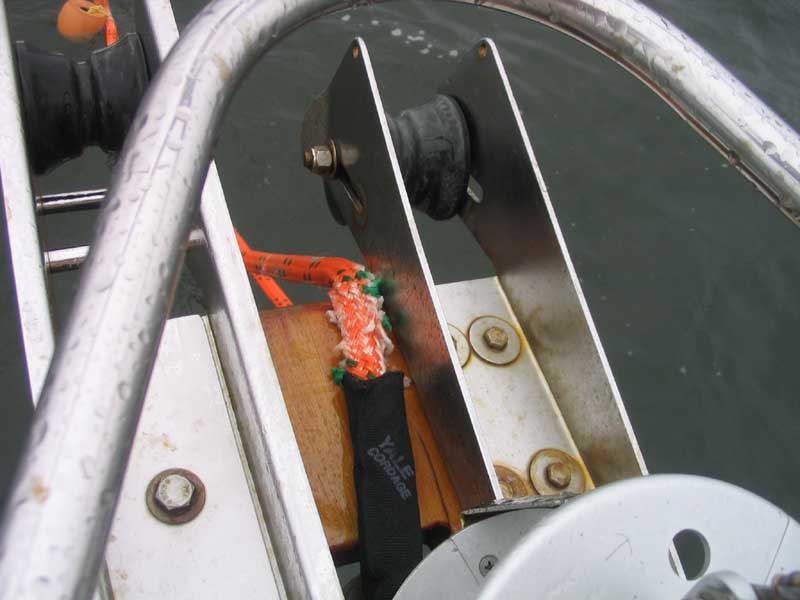
The platform was slightly worn under the pendant; no big deal.
What was a bigger deal, however,
became noticeable a few minutes later. First, though, I noticed that the
port chock had been pulled out of the toerail, leaving bent screws but
only minimal toerail damage. You can see the chock still hanging on in
the very first photo in the series above. This is a close-up of the
toerail beneath.
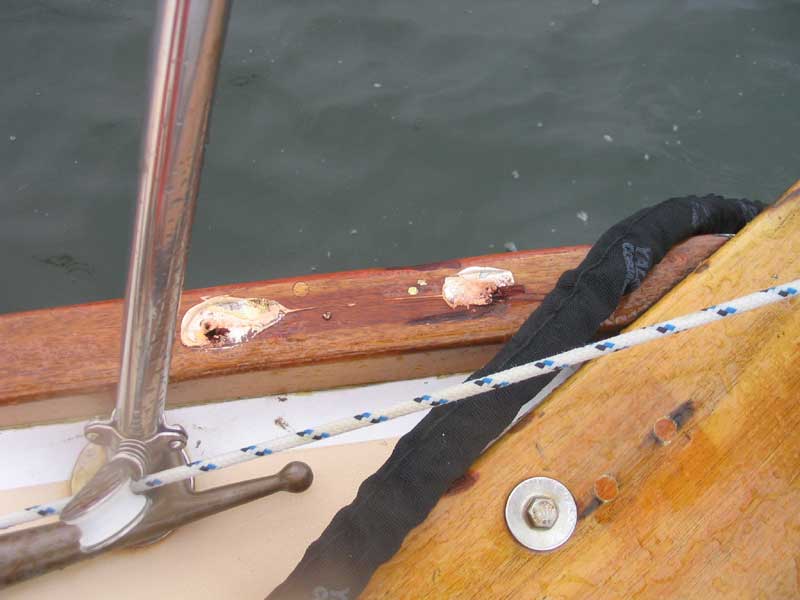
The pendant must have been pulled sharply upwards beneath the ear of the
chock to rip it out in this manner. More impressively, the heavy solid
bronze chock was actually bent in the center, pulled slightly upwards
before or while it was being ripped free.
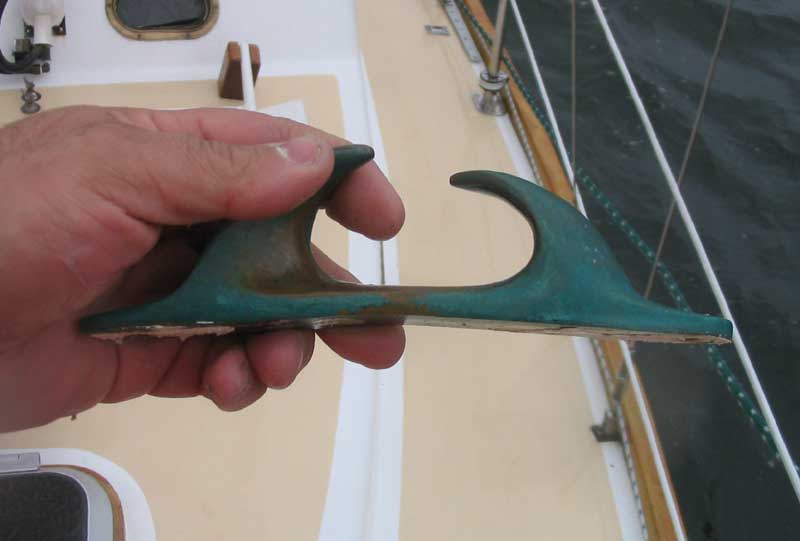
The port pendant's outer sheating was badly chafed, but upon inspection
I observed that the main structural inner core was completely intact. I
am 100% sold on these high-strength Yale pendants. The line is still
usable as is, though of course I will replace it immediately.
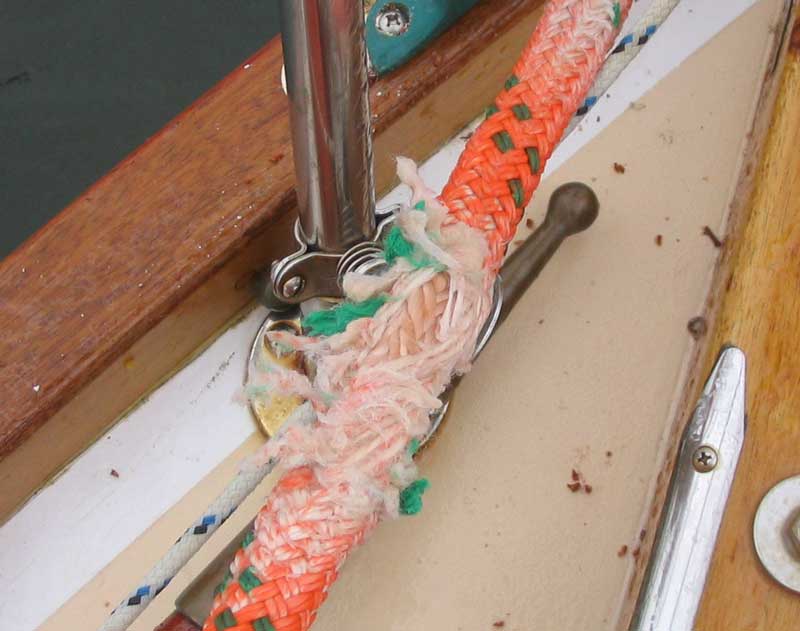
On the starboard side, the line was in good condition, and
well-protected by the chafe gear that comes with the Yale lines. The
chafe gear was worn through in one area, so I turned it and replaced the
line in the chock. The slight chafe can be seen here:
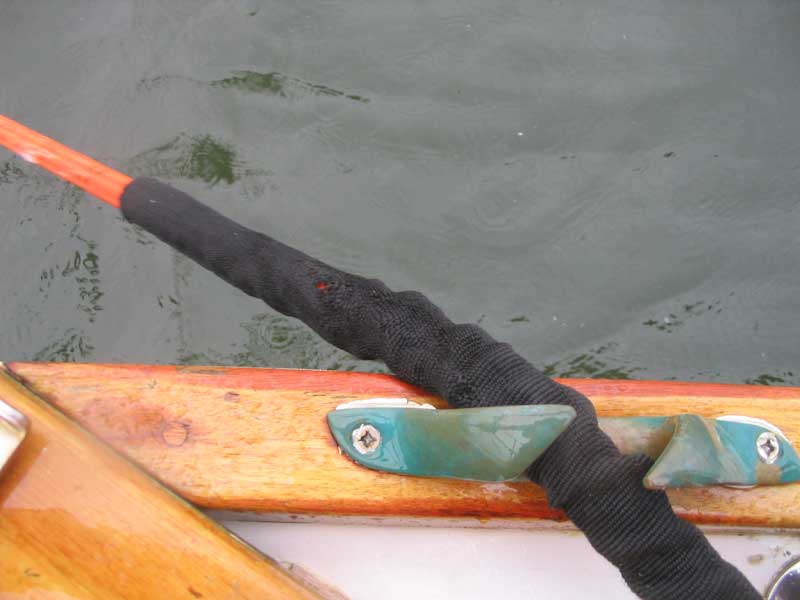
OK, I've kept you waiting for the real news. Both Nathan and I were
stunned by this discovery: the 3/8" thick stainless steel plate that
provides the guts of the anchor platform was bent on the starboard side!
This first became apparent by noticing that the starboard roller was
pulled up slightly at the aft end, as seen here:
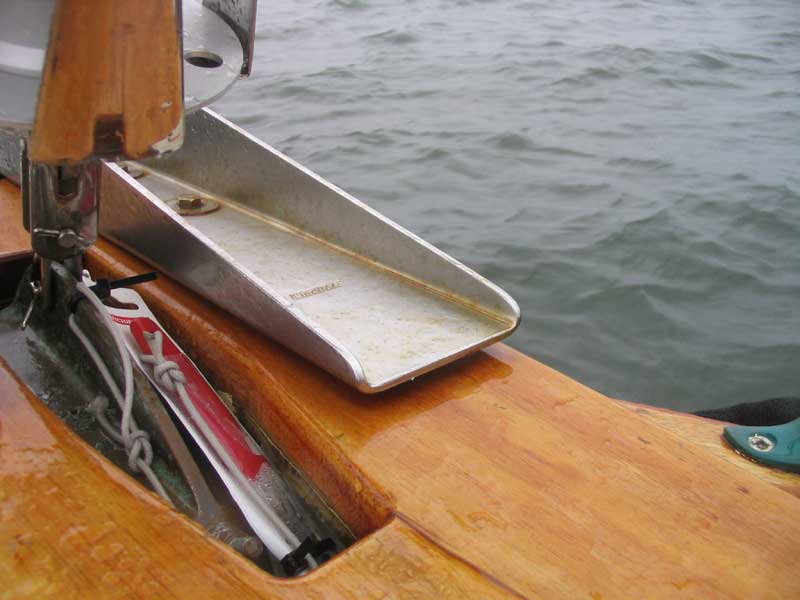
The starboard roller was also slightly deformed. Thank God the anchor
hadn't been in place during all of this.
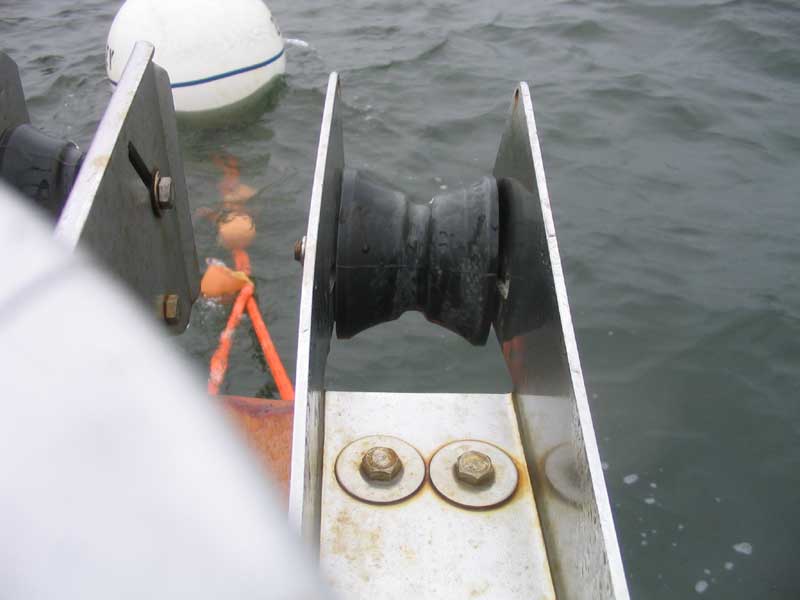
The wooden part of the platform was cracked near the centerline, and
pulled away from the stainless plate a small amount by the bending
force:
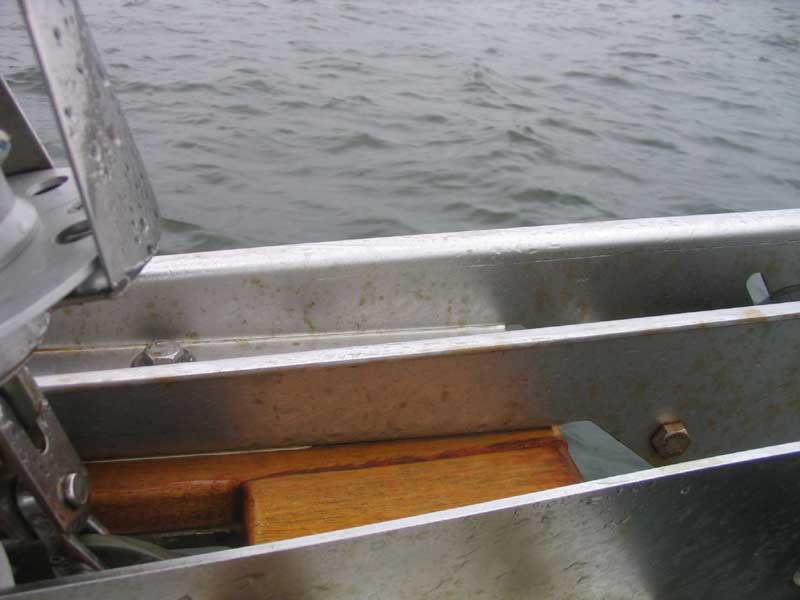
Here, in a shot taken from the dinghy, you can see the crack clearly
between the two rollers, and also how the wooden part of the platform
has separated from the stainless on the port side (right side of the
photo):
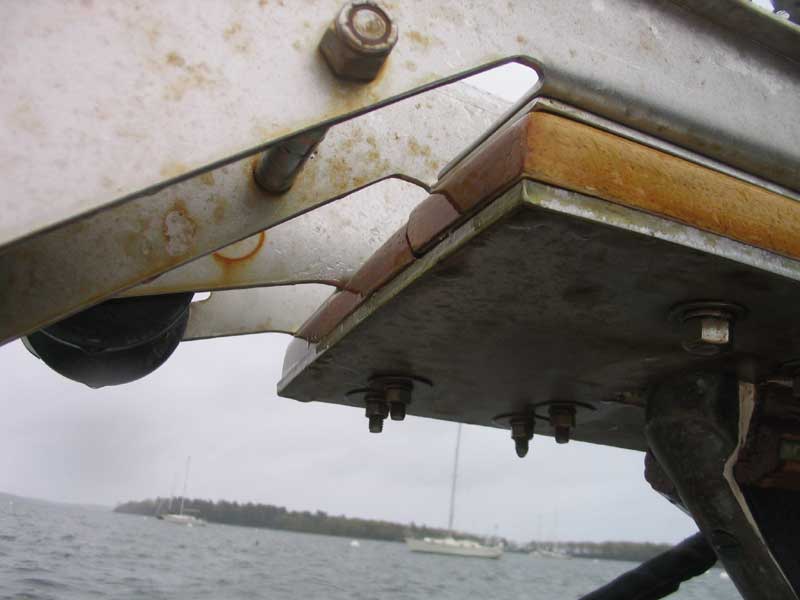
Here is another view:
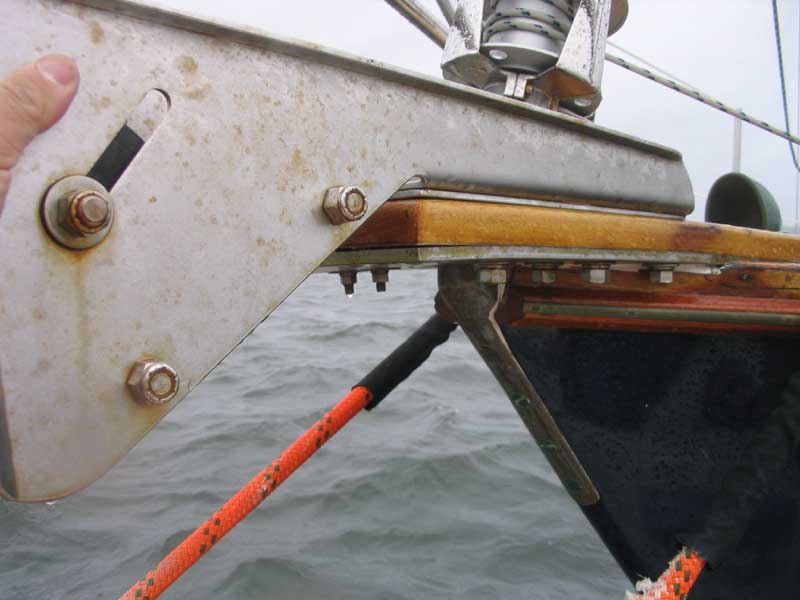
The forces that must have been at play here to bend that stainless
(which is only cantilevered out less than a foot) are mind-boggling.
Clearly, what happened is that one (or both) mooring line(s) became
caught above the platform when the bow plunged down, and then pulled
severely downward at a sharp angle as the bow rose on the next crest.
Given the way the starboard roller was deformed, I hypothesize that the
starboard pendant actually caught that, bent the roller and platform,
and then pulled free (since it was not still caught there when I saw it;
nor did it spend much time fouled there, as there was little or no chafe
to be seen).
Obviously, the port pendant remained stuck in the center, and may have
done all this damage itself, but I feel that the other side must have
been at play as well.
Otherwise, the boat was in fine shape. My brand-new pickup buoy
disappeared off the foredeck, and a few things had shuffled around in
the galley, but no big deal. The CQR anchor, which I had stored on the
sole in the head--tied to the sink pump foot pedal and wedged in place
with pillows and other gear--had not moved in the slightest.
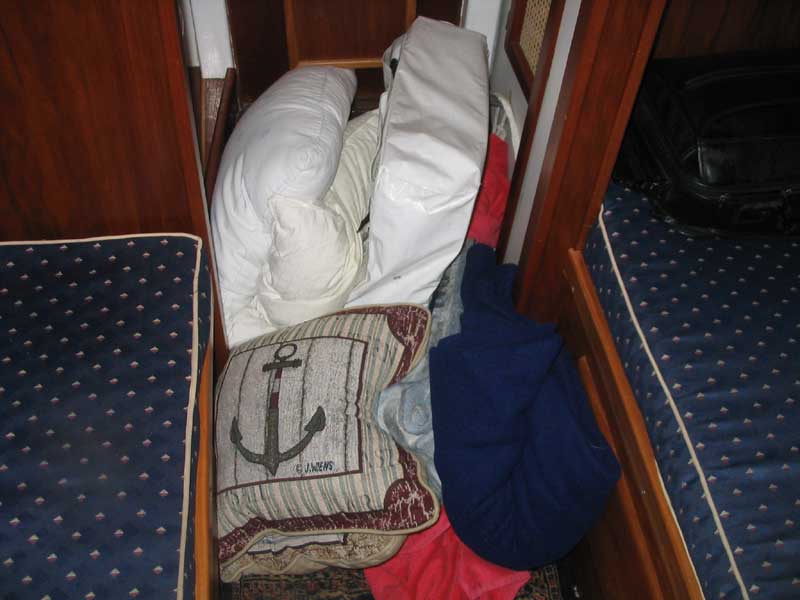
I reinstalled the port chock with two new screws, simply moving it about
an inch for clear material, and moved the port mooring line back into
the chock. Later, I'll properly bed the chock and so forth, but I just
needed it back in place.
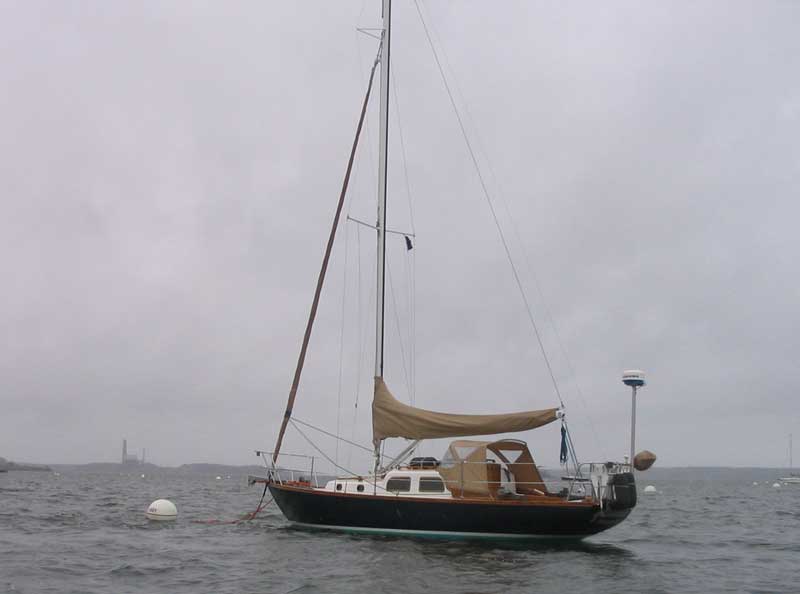
|
|